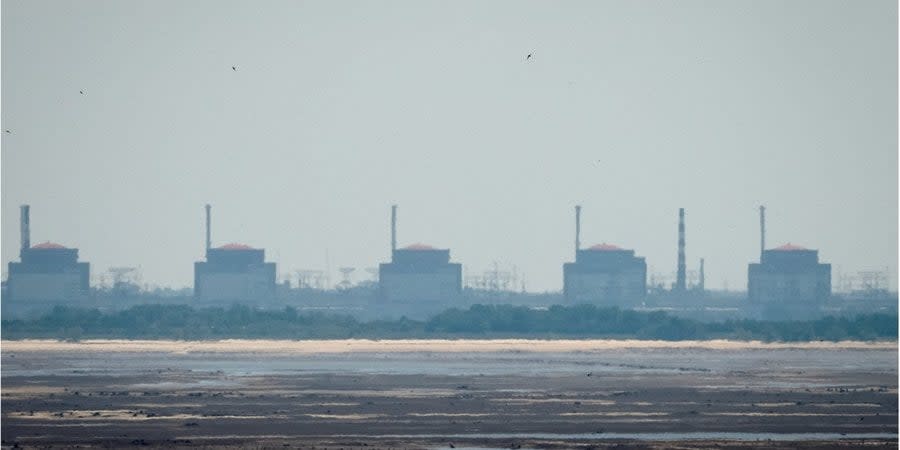ZNPP units in cold shutdown; radiation levels unchanged, Russian-appointed ‘management’ claims

- Oops!Something went wrong.Please try again later.
- Oops!Something went wrong.Please try again later.
All six units of the Zaporizhzhya Nuclear Power Plant (ZNPP) have been put into cold shutdown mode without any “violations of the safety limits and conditions,” the DW's Russian service reported on April 13, citing the so-called “management” of the plant appointed by Moscow.
During the shutdown of the last reactor, the radiation levels at the industrial site, in the sanitary protection zone and in the observation zone “have not changed and are within the limits of natural values,” the report claimed.
On April 12, the Wall Street Journal reported that the Kremlin dictator Vladimir Putin had informed the director general of the International Atomic Energy Agency (IAEA) Rafael Grossi that Moscow planned to restart the occupied ZNPP.
Although specific plans and timelines have not been disclosed, a diplomat familiar with the matter said that Russia could restart at least one reactor by the 40th anniversary of the ZNPP’s connection to the USSR grid in late 1984.
Read also:
Russia playing a ‘very dangerous game’ after drone incident at Zaporizhzhya Nuclear Power Plant — US
Energoatom points finger at Russia for alleged "drone attack" at Zaporizhzhya Nuclear Plant
Concerns have been raised by the IAEA about Russia’s ability to safely and successfully restart the ZNPP, which relies on Western control systems, American nuclear fuel, and is unfamiliar to Russian specialists operating “Soviet-style” plants.
Until today’s report, five of the six reactors were in cold shutdown, and one was in hot shutdown to produce heat and steam.
Earlier, on April 7, the IAEA announced that a drone had exploded on the grounds of the ZNPP. According to Grossi, the agency recorded at least three direct hits on the ZNPP reactor’s main shield.
Later in its report, the IAEA said that explosions and the sound of gunfire were heard on the ZNPP territory when Russian troops opened fire on an object that looked like a drone. In one of the plant’s six reactor buildings, experts found damage to communications and surveillance equipment. Outside the laboratory, the agency saw bloodstains next to a damaged military vehicle, “indicating at least one casualty.”
Ukraine stated that it was not involved in any provocative actions or strikes on the territory of the Ukrainian nuclear facility and demanded the immediate liberation of the ZNPP territory from Russian troops.
On April 9, Ukrainian military intelligence reported that the security situation at the ZNPP was deteriorating due to the actions of Russian forces, but that no radiation leaks had been detected as a result of the drone explosion.
We’re bringing the voice of Ukraine to the world. Support us with a one-time donation, or become a Patron!
Read the original article on The New Voice of Ukraine

